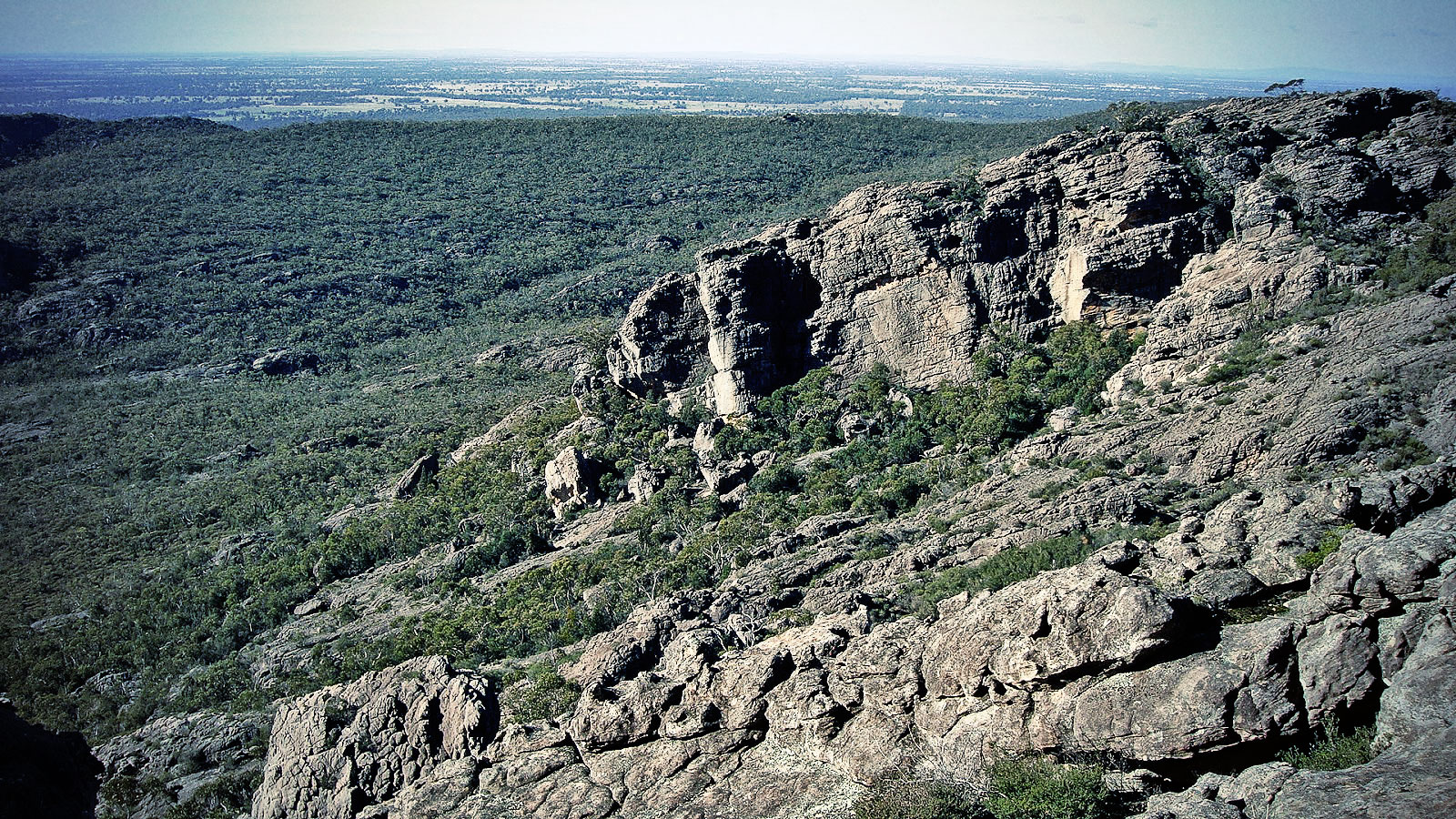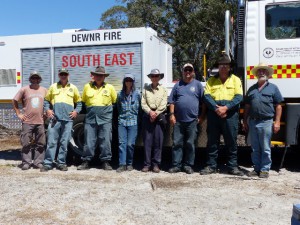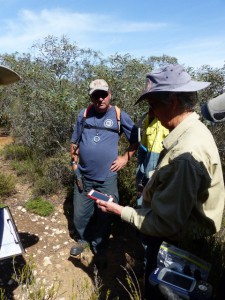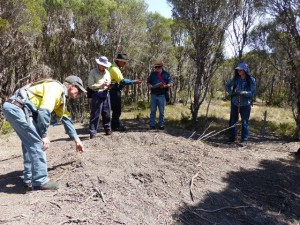
Malleefowl Mound Monitoring complete for 2014
I have just returned from a few days out with Vicki Natt monitoring malleefowl mounds as part of the annual grid monitoring program. This activity is considered a key component of the South East Regional Action Plan for Malleefowl and is about understanding whether populations in key sites are persisting and if any changes in their breeding over time is occuring. Vicki coordinates the mound monitoring each year at various national park reserves including Mt Boothby, Coorong, Gum Lagoon, and Mt Scott. This trip 8 participants came to Gum Lagoon to help with the ‘Coola Coola’ grid.
Vicki provided an informative training session on how to complete the monitoring of a mound both using data sheets and mobile devices. It was stressed how important this monitoring is to the understanding of whether our management actions are helping the Malleefowl (i.e. fox baiting or deer control).
Once the training was complete and the expectations were set, day one involved two teams (Leaders Vicki and Jan Copping) setting off with GPS in hand, maps and coordinates to find each mound then record and take measurements to determine its ‘status’ for this breeding season. Was the mound active?
During the mound searches and monitoring, Vicki and Janet highlighted the importance of not walking too close to the mound until it had been scanned for tracks and traces of Malleefowl and/or foxes (or other potential predators). On occasions a mound was active, so a search (within 20m) for feathers or egg shells was undertaken to check that adult birds or eggs had not been taken by foxes or other predators. This website from the Victorian Malleefowl Recovery Group summarises the process of monitoring a mound.
On day two, three teams were formed which facilitated a rapid completion of the mounds that remained, finishing up by lunchtime. At the conclusion of the two days several active mounds were reported which was encouraging, but we await the final determination once all grids in all reserves have been completed and data entered and analysed. Overall, a worthwhile trip with perfect weather, good company and the usual camp ground carry-on.
Through the Restoring Under-represented Ecological Communities project it will be my role to facilitate the review of the Regional Action Plan written for Malleefowl back in 2009 by Harley and LeDuff. The aim of the review will be to collate information about what has been achieved over the last 5 years and to discuss any improvements that we collectively think could be made to the recovery and long term sustainability of populations of Malleefowl in the South East region.
Anyone interested in being involved with Malleefowl conservation is urged to get in touch as it is a rewarding experience and opportunities for volunteering are available throughout the year.
For further information contact Bryan Haywood, Senior Ecologist (Nature Glenelg Trust)



